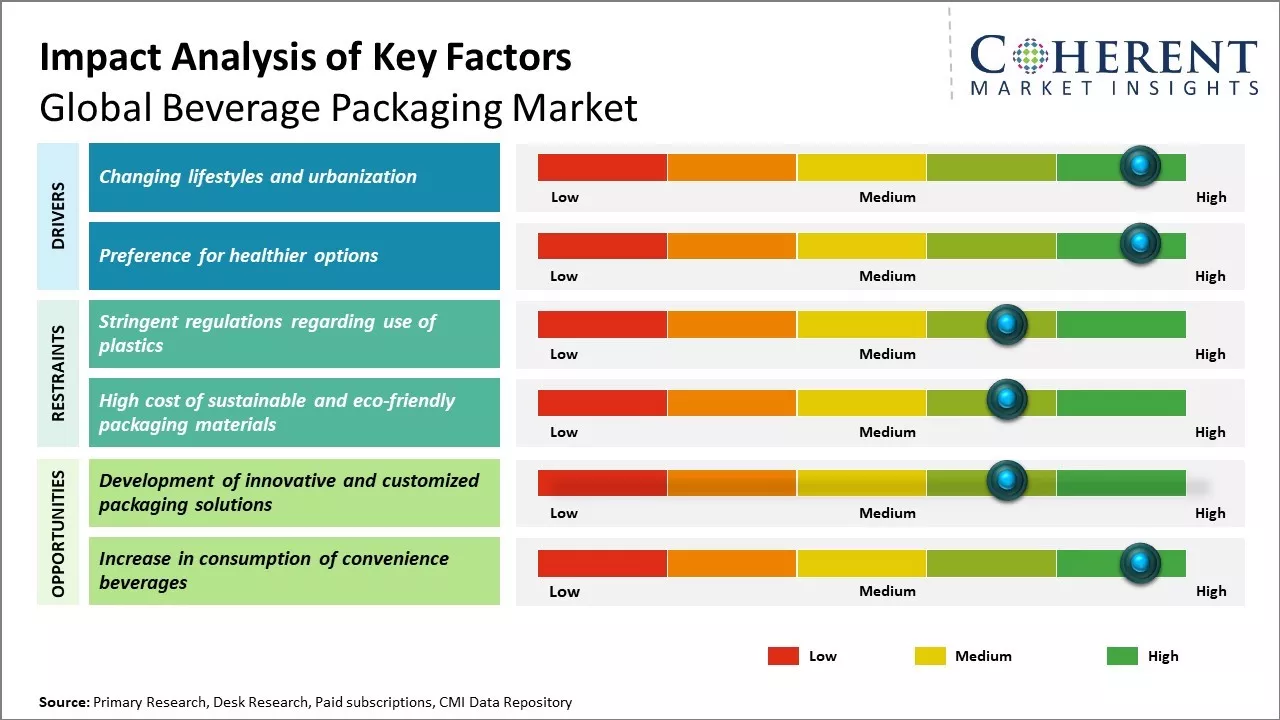The beverage packaging market is estimated to be valued at USD 150.79 in 2025 and is expected to reach USD 203.97 Bn by 2032, exhibiting a compound annual growth rate (CAGR) of 4.4% from 2025 to 2032.

To learn more about this report, Request sample copy
The market is anticipated to showcase significant growth over the forecast period owing to the rising demand for convenient and sustainable packaging solutions from the beverage industry. The beverage packaging market is expected to be driven by the rising popularity of single-serve and on-the-go beverage packages among consumers. There has been a growing demand for plastic and aluminum containers from beverage brands. Furthermore, the increasing uptake of recycled and recyclable packages to achieve sustainability goals will also contribute to the market trends. Innovation in packaging formats including slim cans and aseptic cartons are also gaining traction in the market.
Drivers of the Market:
Changing lifestyles and urbanization
With growing urbanization and changing lifestyles, there is a rising demand for convenient and easily portable beverage packaging solutions. More people are living in dense urban areas today and rely heavily on packaged beverages for their daily hydration and nutrition needs. Traditional beverage containers such as bottles and cans allow people to carry their preferred drinks wherever they go in an easy and spill-proof manner. As cities become more crowded with hectic schedules, consumers value packaging technologies that offer them hassle-free consumption of beverages on the go.
Another key aspect is the growing trend of nuclear families and dual-income households in urban centers. Working professionals and young urban populations have limited time for meal preparation at home due to their fast-paced lifestyle. This promotes the consumption of ready-to-drink beverages that can be easily purchased from retail stores for an instant energy boost. Packaging innovations allowing portability, resealability, and portions tailored for single-serving needs cater well to these demographics. The demand for sustainable, eco-friendly, and recycled packaging has also increased due to rising health and environmental awareness among urban consumers. Beverage brands are responding to this opportunity by offering green packaging formats made from renewable resources.
Joining thousands of companies around the world committed to making the Excellent Business Solutions.
View All Our Clients